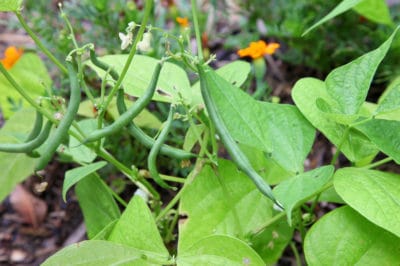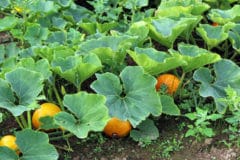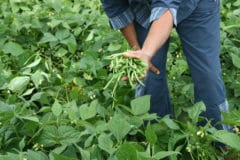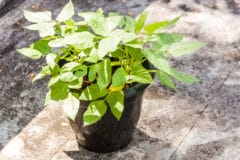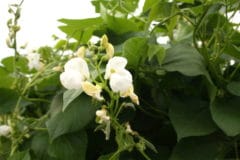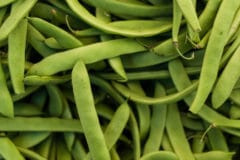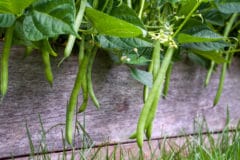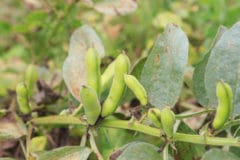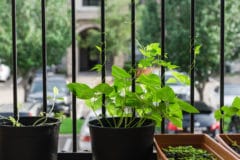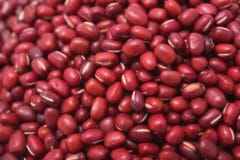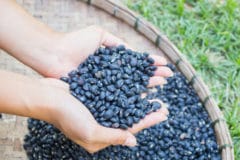Bush Bean Maturity Dates
Bush beans nearly always have shorter maturity dates than pole beans, especially when used as green beans. They typically are ready all at once and many don’t make very good dry beans. Here are a few:
- Carson – 56 days.
- Valentino – 53 days.
- Alicante – 55 days.
- Jade – 53-57 days.
- Blue Lake – 53-58 days.
- Kentucky Wonder – 65 days.
Pole Bean Maturity Dates
Pole beans were originally grown for storage as dry beans. Maturity dates below are for green, not dry, beans. They may have strings that must be removed. These make good green beans:
- Cherokee Trail of Tears – 85 days.
- Louisiana Purple Pod – 67 days.
- Rattlesnake – 65-85 days.
- Helda – 58 days.
- Kentucky Blue – 57-65 days.
Temperature and Maturity
Temperatures can affect how long it takes beans to reach maturity. Beans germinate best at temperatures between 60°F (16°C) and 85°F (29°C) degrees. Colder temperatures may delay germination for as much as two weeks and may also increase maturity rates. However, very hot weather can affect flower development and pod set, which can also delay maturity.
Growing Conditions and Maturity
To ensure your beans mature close to the expected maturity dates, you need to give them optimum growing conditions. Beans like fertile soil that is not too high in nitrogen, which promotes leaf growth, not pod growth. Soil should also drain well as beans can develop molds and mildew if too wet. Always plant beans in full sun for best growth and development.
Green, Shell or Dry
Although you may be growing your beans primarily to eat in their immature state, that can be a narrow window as far as maturity goes. You need to pick every day or two to get the green beans. If you miss that stage, however, larger beans can still be cooked green if you slice them lengthwise. Many are also good for shell or dry beans.
Other “Green” Beans
In addition to the sort of beans we commonly eat green, other bean varieties are be used in the same way. Runner beans can be eaten green when young (the strings must be removed). The oriental variety known as the yard long or asparagus bean forms pods up to 30 inches long. They are cut crosswise into smaller pieces and stir-fried or sauteed.
